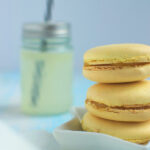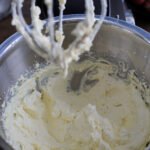You may have followed the recipe to the letter, but it’s no good. A cream that slices, a forgotten ingredient or a hazardous temperature… and a well-oiled preparation turns into a disaster. With time and the preparation of the CAP in free candidate, I learned 7 magic tricks that allow to catch up (almost) any recipe.
Before I reveal all my tricks, I’ll first give you the most important but perhaps most difficult trick to get your head around: think! When we miss something (me first), we tend to panic, then get upset and finally throw it all away to move on and start over. It’s human, but it’s the worst way to go. When things go wrong, the first thing to do is to stop for a moment, take a breath and step back for 15 seconds. What went wrong? Why did it happen? Getting into the habit of asking yourself these questions will help you think through how to fix it.
You certainly know that show “Norbert and Jean: the challenge” where the two chefs had to make exceptional recipes live in housewife kitchens? I had been struck by their ability to take a step back and bounce back (and all this under the eye of the cameras in front of thousands of viewers). I loved Jean Imbert’s quote: “A good cook is not someone who gets it right the first time, it’s someone who is capable of correcting the course and making up for a recipe”. I think this is a very good philosophy in a kitchen and in life in general. So before you get upset, you take a deep breath and think about what method will be best to catch up on your recipe:
Table des matières
THE HAND BLENDER
I think it is the most used magic tool during the preparation of the CAP. A ganache that isn’t smooth, a mousse that’s seedy, an overcooked custard… One stroke of the hand blender and you’ll have a smooth preparation again. Well, don’t have fun catching up on your custard like that at the exam, but at home to avoid throwing it all away, it works very well (it still retains a slightly pronounced eggy taste)!
But be careful when using the hand blender, be sure to use a tall, narrow container so as not to introduce air into your mixture. Otherwise, your cream or ganache will have air bubbles, which will be unsightly (in a frosting for example) and will make your preparation swell a lot when baking (which is rarely the desired effect).
THE SIEVE
It is often the complement of the mixer. When you’ve tried to dissolve the pieces and it didn’t work, you discard it! Always use the blender first to try to get as much of the mixture as possible (so you don’t get stuck with the recipe).
The strainer works very well for example with a caramel which would have frozen a little or a ganache where there would remain pieces of chocolate. You can also use it for a pastry cream that has stuck to the bottom of the pan (not too much, otherwise you’ll taste it).
GELATINA
This is more of a tip to avoid the hassle than to really make up for a failed recipe. Whipped cream that won’t rise? A pie crust that can’t be rolled out? Put it back in the fridge (or even the freezer), wait a bit and try again. It should be fine on its own. Sometimes you have to wait until the mixture is really cold. By the way, if you don’t have enough time to chill a mixture, consider separating it into several parts. Smaller quantities cool much faster than larger ones.
THE BLOWTORCH
So this is a typical CAP tip and it works especially with butter problems. Sometimes the butter freezes in pieces in the cream and makes it greasy. A little blow with a blowtorch on the bowl of the food processor (stainless steel, of course…) will allow you to heat up the preparation a little bit and melt the butter pieces. Be careful, stop before the preparation is totally liquid because it’s impossible to catch it!
TIME
Did you know that when you are stressed, time seems to pass more quickly? It is a brain mechanism that analyses less things and makes time seem to pass more quickly.
So sometimes, if your preparation doesn’t turn out as expected, really give yourself time to succeed. For me, it always seems like an eternity to wait to whip up a buttercream. Every time I think I must have missed something but I force myself to wait to be sure… and every time it rises correctly afterwards!
REUSING
Well, obviously this delicious mousse is a failure and won’t hold up to that beautiful entremet you had planned. But after all, who decided it was unusable? Why don’t you put your mousse in a glass jar and change the name from “mousse” to “cream” (or even “coulis” :P).
If the preparation lends itself to it, you can also try adding 4 eggs, 150 g of flour and put in the oven at 180°. It can give good surprises!
The idea is to be creative and to turn your mistakes into strength. You will see that sometimes the so-called failed result pushes you to surpass yourself and is finally better than the original idea.
Bonus :
J’ai appris récemment qu’on pouvait rattraper une crème fouettée trop battue en ajoutant un peu de crème liquide I recently learned that you can make up for a whipped cream that has been beaten too much by adding a little liquid cream to dilute the preparation. If the ganache doesn’t set, add a little water to boost the emulsion. I have listed my 8 tips for making up for a failed ganache in an article!
What about you, do you have any great tips for making up for screw-ups?





